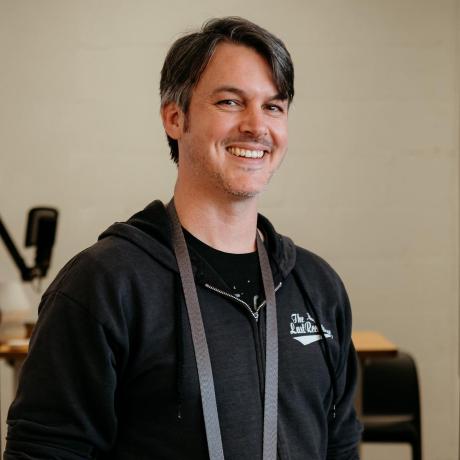Welcoming two new Rust GPU maintainers
We’re thrilled to introduce two new maintainers for the Rust GPU project: Schell Scivally and Firestar99.
Both bring experience in graphics programming, a deep understanding of Rust, and a passion for advancing GPU computing.
Here’s a bit more about each of them in their own words:
Meet Schell Scivally
I'm Schell Scivally, a game and graphics programmer living on the South Island of New Zealand 🇳🇿🌴 with my partner and our two kids.
By day, I work at Narrative.so, where I use AI to streamline photographers' culling and editing. Before moving here, I was a Haskell programmer in the Bay Area of California.
I’m also an NLNet grantee working on Renderling, a cross-platform GPU-driven renderer that runs on WebGPU. You can check it out at renderling.xyz.
I use rust-gpu to debug shaders on the CPU while keeping all the benefits of Rust’s development experience. It lets me shift a lot of work from the CPU to the GPU without having to change or duplicate types! I’d love to see rust-gpu grow, get more contributors, and become the foundation for a thriving shader ecosystem on crates.io.
Meet Firestar99
I go as Firestar99 online and am a graphics programmer and master's student from Germany 🇩🇪.
Currently, I'm in the process of finishing off my master’s degree with a thesis about replicating UE5's Nanite in a custom engine written in rust. For those unfamiliar, Nanite is a new approach to generate and render models with levels of details (LOD), being the first to allow a single instance of a mesh to transition smoothly from higher to lower levels of detail as it gets further away from the camera, without any visible holes or seams in the model. In the context of rust, you may have heard of bevy implementing it as well.
And of course I'm using rust-gpu for my shaders! By far the most important feature to me is the ability to share datastructures across GPU and CPU code, which allows me to preprocess my models in a seconds long offline bake directly into the GPU representation, enabling me to load even the most complex models like bistro in half a second.
On the way there I've made various additions to rust-gpu like Mesh shaders, subgroup intrinsics and reworking
ByteAddressableBufferas well as rebasing a lot of existing PRs. In the future, I hope to be able to contribute my bindless API specifically designed for rust-gpu and find a job in the industry, hopefully associated with the project.
Please join us in welcoming them to the team! Thanks to our new maintainers, Rust GPU now has four official maintainers.
We’re eager to add more users and contributors to Rust GPU and will be working on
revamping the onboarding and documentation soon. To follow along or get involved,
check out the rust-gpu repo on GitHub.

